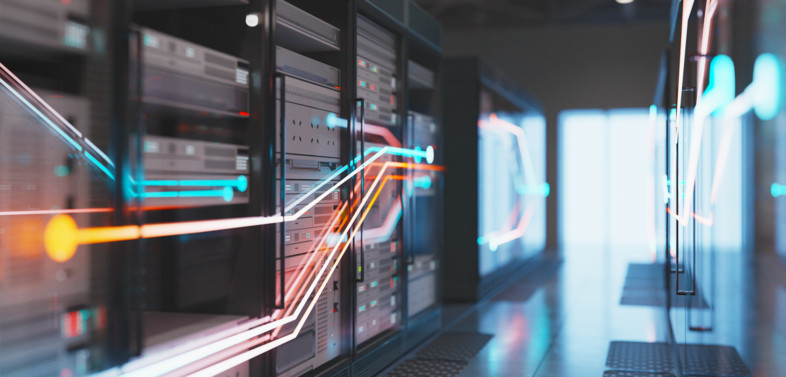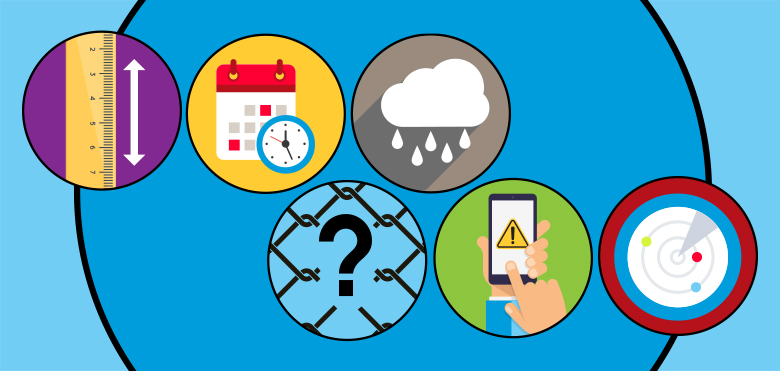Protecting the world’s data centers
Data centers have become an intrinsic part of modern society. Both public and private spheres depend on them to function, be it for local or remote operations, the flow of information and connectivity, digital transformation and improved services, smart cities, intelligence gathering, or data storage purposes. And with the vertical forecast to grow at a compound annual growth rate (CAGR) of approximately 12%, their proliferation is showing no sign of slowing.
Data centers are incredibly high value sites, demanding zero downtime operations. As with all critical infrastructure, threat and risk propensity must be diligently addressed from the outset. Since data centers are physical structures, these challenges are not only digital, but material. They affect every decision in the commissioning and running of a data center. But data centers can be built (almost) anywhere. They aren’t confined to the country of origin. This further complicates the decision-making process. As a result, there are both macro and operational threats that must be considered.
The threats at hand
At a macro level, these risks span things like the regional cost of unhindered power supplies and inflation rates, local talent availability and retention, the political dynamics between countries, a county’s own geopolitical (in)stability, and supply chain access – especially in a post-pandemic world.
Operationally, the challenges are just as significant. As critical infrastructure, the SLA for downtime is zero. While there is often redundancy in place, threat from intrusion and unauthorized access, the safety of employees, impersonation, and of course cyber-attacks, continue to keep IT/security managers on their toes. These threats, if not addressed at the time of commission, can and will adversely affect its running.
Minimizing risk: A multi-layered approach
Video surveillance with analytics and 100% coverage
The key to securing data centers is a multi-layered approach to integrated security. Central to it all is the use of video surveillance. Cameras today are used as data-rich sensors in many applications. With advances in functions and embedded features, cameras are no longer just for recording incidents but also assist in making real time decisions. As such, they play a pivotal role in securing sites from internal and external threats through deterrence, real-time analysis and response, and documentation.
From an external perspective, data centers often have wide perimeters. With intrusion a leading threat, overcoming this by installing thermal and visual cameras along perimeters combined with radar and audio solutions are a powerful and comprehensive line of defense. This combination of different form factors, ranging from discreet cameras to multi-sensor, assist in optimizing investment and also assist to provide 100% coverage with minimum-to-no blind spots. Enhanced by embedded analytics, they can detect potential breaches or local unwanted behaviors just beyond the perimeter, alerting staff and allowing them to assess and respond to situations. These same smart, visual cameras can also be used for access controls. Technologies such as facial or license plate recognition can quickly and accurately verify personnel at site entry points.
Within the data center itself, thermal cameras can be installed to measure heat maps of devices and server racks, alerting staff to unusual temperature spikes or when safe thresholds are breached to prevent overheating, particularly of critical servers. Cameras can now in fact be used to detect and act in emergencies like smoke and fire detection and activating evacuation announcements through IP audio.
Due to regulations, data centers are required to store any surveillance data locally. This incentivizes the use of cameras which consume less storage while still able to capture footage at higher resolutions. Certain cameras have advanced analytics features and functions that allow them to identify when footage is of lower value, for example the scene is static for an extended period. They can then dynamically adjust recording settings such as frame rate and resolution, saving on storage and network bandwidth.
Improved accuracy with radar surveillance
The second layer of defense lies within the fences. Keeping track of movements across this real-estate, be it on the ground or aerial incursions from drones, is of paramount importance. While cameras could be used to track suspicious activity by individuals across the premise, radar surveillance is ideal. It provides accurate location and speed detection, while PTZ cameras allow for more detailed investigation as needed. Cameras integrated with radar also reduce blind spots and provide more accurate data.
Foolproof access controls
Next comes access to the buildings themselves. Access controls are the physical gatekeepers, with personnel permissions individually provisioned based on their role. There are many different types of available credential-based controls, often used in combination, spanning cards, pins, and biometrics such as facial and iris recognition. However, depending on the geographies, certain regulatory restrictions may limit the use of biometrics. Many solutions have in fact evolved to make use of multi-factor authentication. By having credentials reside on mobile devices instead of keycards or fobs, that are infamously shared or easily duplicated, the risk of impersonation is significantly reduced. Many systems will also use two-way visual communications to add a further layer of ID confirmation.
Once inside the server rooms, access to both rooms and racks can be further guarded with fingerprint scanners or QR codes, while cameras equipped with motion sensors provide visual oversight and documentation whenever triggered. And modular camera systems within the racks themselves keep track of opening doors and other unexpected activity.
Body worn solutions for forensic evidence
Body worn cameras also add a further layer of security. While the assumed use case is for patrolling guards at entry and exit points, these cameras in fact act as powerful insurance when repairs and installations take place. Workers can document all changes, providing high quality forensic evidence for review should there be suspicion of tampering. Body worn can also be used for impact detection, alerting staff to when the wearer falls to the ground and significantly expediting any required assistance.
Enhancing systems with network audio
Alarms and supporting audio capabilities are a necessary complement to surveillance systems. IP based solutions allow for automated announcements and alerts both to deter intruders and to alert staff to them, or in softer rule enforcement such as deterring jay walking in restricted areas. It also plays a vital role in emergency and evacuation situations, broadcasting alerts, instructions, and guidance. Two-way communications can further verify personnel access or provide hyper-localized instruction. And of course, they can also play soothing background music to create pleasant work environments too.
Secure solutions at every stage
As likely targets of cyber-attacks, ensuring a secure system is vital. Solutions that support zero-trust principles and adhere to the highest security standards for both hardware and software are imperative for keeping vulnerabilities to a minimum, making use of encryption and trusted execution environments (TEEs).
When combined, this multi-layered approach delivers highly effective security to data center sites – all manageable from central, even off-site, locations.
Learn more about how Axis secures the world’s data centers here.



